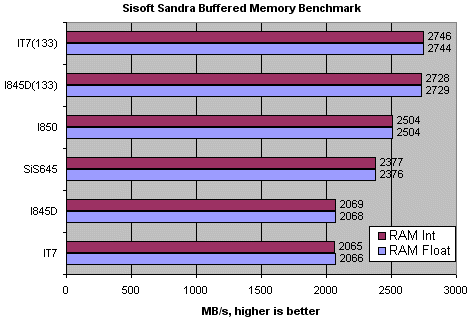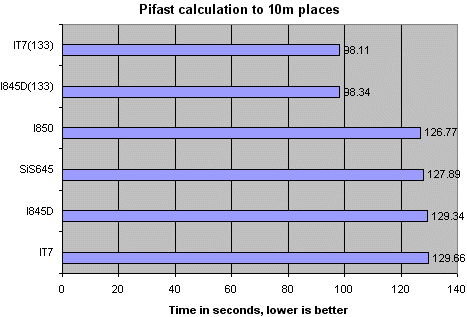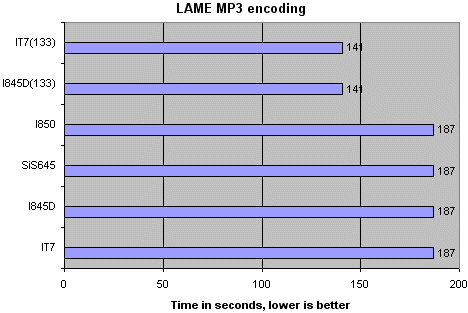Benchmarks I
We'll start of with Sisoft Sandra's memory benchmark. The I845E chipset is largely the same as the present I845D with the exception of official 133FSB operation (and accompanying FSB:PCI dividers). It also features USB2.0 support on the ICH4 Southbridge. We expect the results of the IT7 to mirror that of other 1845D motherboards, let's have a look at the buffered benchmark first.

We see the IT7 almost mirror the I845D's memory performance at 100FSB. As expected, the SiS645 and I850 chipsets are faster as they natively support faster memory subsystems with PC2700 and RAMBUS support respectively. Raising the CPU FSB to 133 (2133MHz) and running RAM asynchronously gives the IT7 a small lead over the I845D. This largely shows that no architectural improvements are present in the I845E chipset over the existing I845D.
Let's see how the IT7 copes with out first practical test, Pifast. Pifast simply calculates the constant Pi to X million places. It relies on memory throughput as well as sheer CPU power. We've set it to calculate to 10 million places using the fastest method.

More of the same here, the IT7 trails ever so slightly at 100FSB but regains the lead when running at 2133MHz / 133FSB / 177MHz RAM. This just shows what a difference raw clock and memory speed makes. Platform differences don't appear to be that significant in the context of the above graph.
Next we'll turn our attention to MP3 encoding. We're benchmarking by encoding a 481MB custom WAV file into 128kb/s MP3 using the LAME 3.91 encoder and the popular Razor-Lame front-end.

LAME MP3 encoding has previously shown itself to be an entirely CPU-dependent activity. Changes in memory subsystem appear to make no difference whatsoever. We see IT7 and I845D streak ahead due to pure clock speed alone, 2133MHz Vs. 1614MHz.









